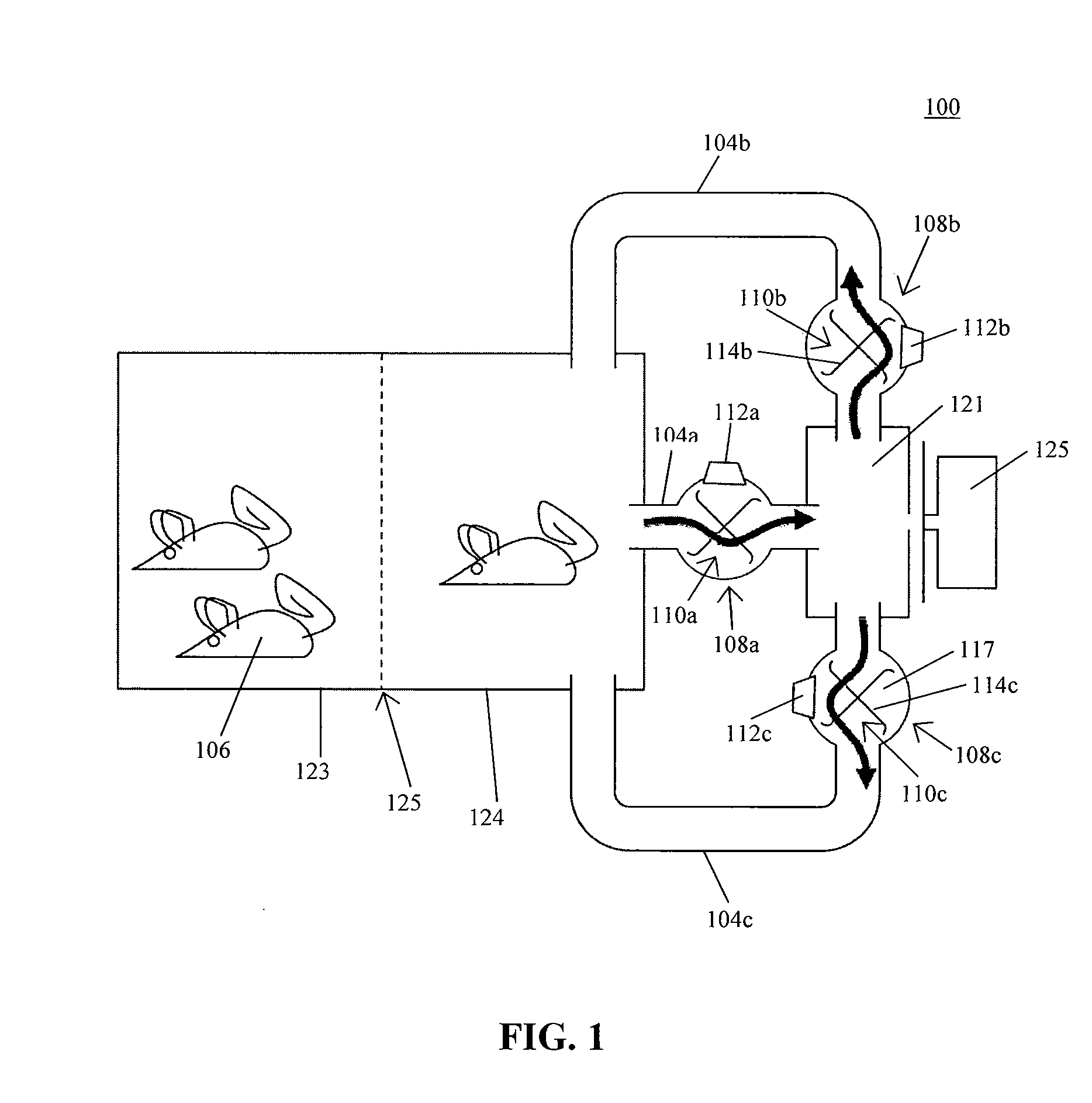System for automating animal testing protocols
a technology for animal testing and protocols, applied in the field of system for automating animal testing protocols, can solve the problems of insufficient data collection, inability to accurately detect the presence of animals, etc., and achieve the effect of high throughpu
- Summary
- Abstract
- Description
- Claims
- Application Information
AI Technical Summary
Benefits of technology
Problems solved by technology
Method used
Image
Examples
examples
[0156]Proof of Concept Data.
[0157]Using the housing system depicted in FIG. 15, mice were injected with either saline (mouse 0413551c00) or a compound known to induce a sickness response (mouse 041354b0ed). Mice were weighed whenever they collected feed and were identified by an RFID tag. The results are shown in FIG. 18. Note the normal diurnal rhythm in body weight, and the breaks in feeding behavior, whereby the device was able to detect the onset of both sickness and recovery almost immediately.
PUM
 Login to View More
Login to View More Abstract
Description
Claims
Application Information
 Login to View More
Login to View More - R&D
- Intellectual Property
- Life Sciences
- Materials
- Tech Scout
- Unparalleled Data Quality
- Higher Quality Content
- 60% Fewer Hallucinations
Browse by: Latest US Patents, China's latest patents, Technical Efficacy Thesaurus, Application Domain, Technology Topic, Popular Technical Reports.
© 2025 PatSnap. All rights reserved.Legal|Privacy policy|Modern Slavery Act Transparency Statement|Sitemap|About US| Contact US: help@patsnap.com



